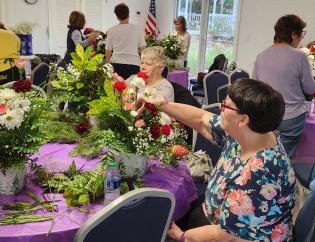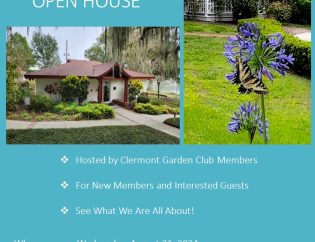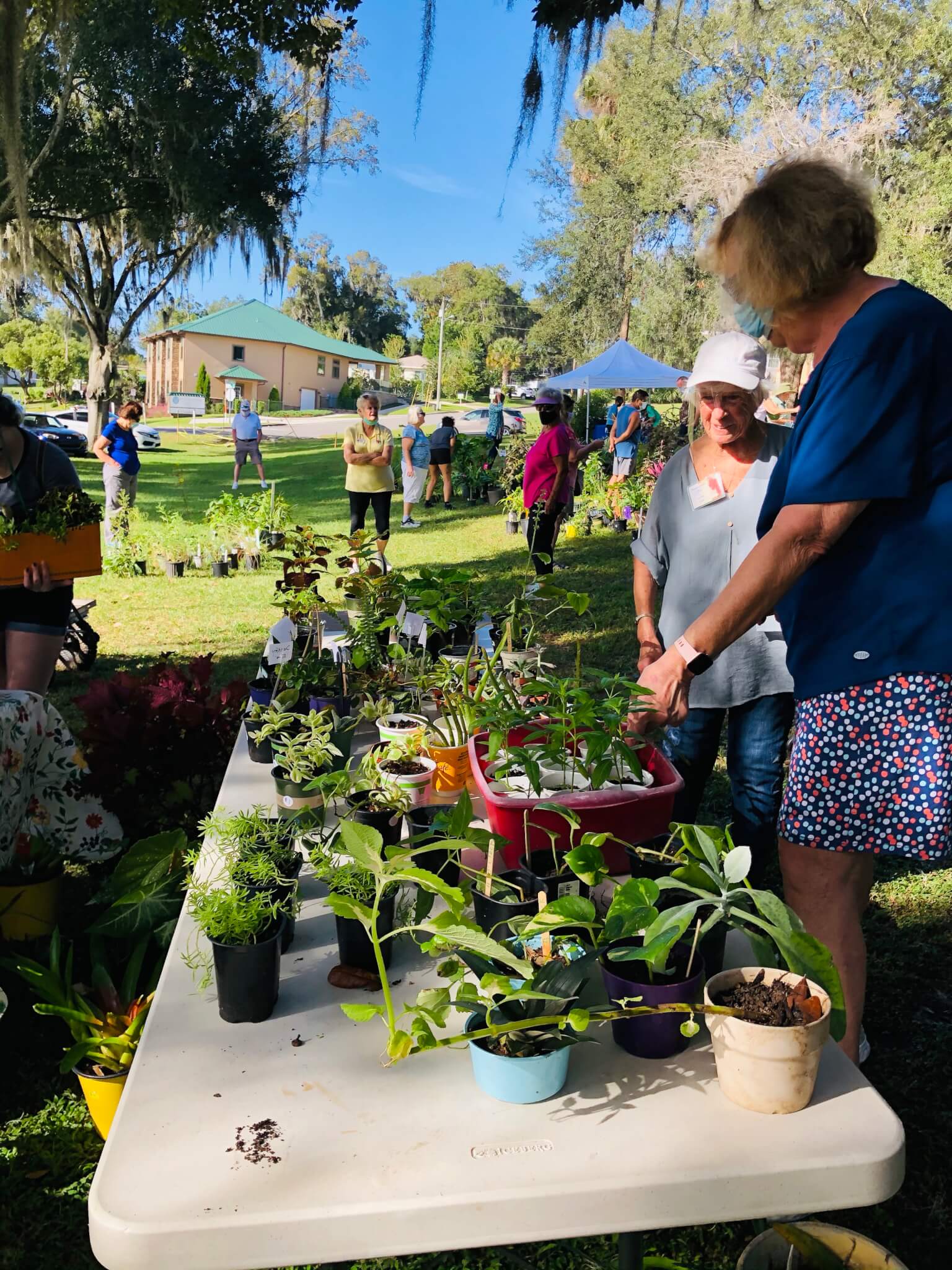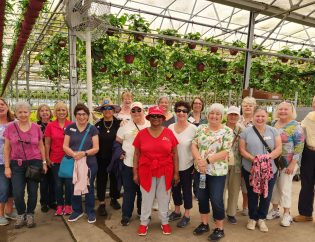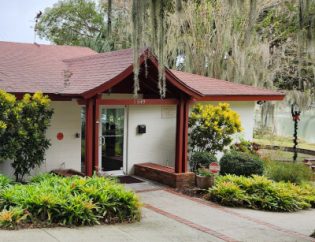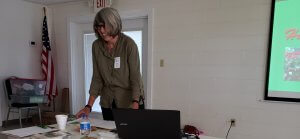
Leslie Lightbourne, Master Gardener and Residential Horticulture Extension Agent, UF/IFAS Extension Sumter County was the featured speaker at Clermont Garden Club on Wednesday, November 21, 2018.
Leslie talked about the selection, care, and history of holiday plants. She shared planting guidelines for your holiday plants and how to keep your holiday plants healthy, after the holidays, in pots or in your yard.
The holiday plants Leslie discussed were:

Poinsettia,(Euphorbia pulcherrima) a native to Mexico, used by the Aztecs for dye, and named for the man who brought the plant to the United States, John Poinsett. Albert Ecke began cultivating poinsettia in Los Angeles, CA in 1909. The Ecke family made the poinsettia into a top-selling Christmas plant. The poinsettia is not poisonous.
When selecting a poinsettia, bracts should be completely colored, balanced & full, no leaf dropping or wilting, 2 1/2 times taller than the diameter, and check ‘true’ flowers for too much pollen. Also, the tighter the flower, the fresher the plant.
Inside the house, poinsettia prefer 65 degrees at night, 75-80 degrees during the day, free of drafts, bright light, water when soil is dry to touch mist leaves to add humidity, and do not fertilize during the holiday season.
After the holidays, keep poinsettia dry and do not fertilize. In the Spring, cut off branches and leave 4-6″ on each branch, use a balanced fertilizer, and keep in a partly shady location.

Christmas Cactus (Schlumbergera truncata) is native to South American jungles, NOT a true cactus, and colors are yellow, salmon, fuchsia, and white. The name commemorates Frederic Schlumberger, who had a collection of cacti at his château near Rouen. The plant was discovered in Brazil in 1837 which had been named Epiphyllum russellianum by William Hooker.
Christmas Cactus prefers well-drained soil, soil kept moist but not soggy, bright, but not direct strong sun,and will not tolerate frosts or freezes. DO NOT ROTATE, buds are sensitive to light, don’t like change.
For re-blooming, Christmas Cactus like night temps of 50-55 degrees F, cease fertilization during bud formation, 13 hours of uninterrupted formation from Sept.- Nov. and cover from 6pm – 7am with a paper bag or dark cloth.

Amaryllis (Amaryllis;L) flowers on stalks from late Summer to Fall, flowers on stalks in Spring, bulbs are available from Sept. – Jan., grow all year in Florida, and grow in clumps of 10 or more.
Plant Amaryllis in light shade, well-drained soil, amend soil with organic matter, best to dig, separate, and replant every year, ;plant 12-15″ apart, and use 6-6-6 fertilizer 2-3 times a year. Remove spent flowers before the seed head is produced, remove anthers to prolong flowering, and remove yellowing or brown leaves around Sept. – Oct.

Paperwhite Narcissus (Narcissus papyraceus) is one of the few species known as paperwhite and is a perennial bulbus plant native to the Mediterranean region.
Fill a 3-4 inch deep bowl or other shallow container without drainage holes with crushed rock, pebbles, or other decorative stones to plant your paperwhite bulbs. Push the bulbs down into the stones so the tips stay upright and water until the water just covers the bottom of the bulb. Paperwhites produce snowy white sweetly fragrant flowers.
Paperwhites will grow and bloom with nothing more than water and stones or pebbles. Unlike other narcissus, paperwhites don’t require a cool period before blooming. Give them some food and they are ready to go.

Rosemary Christmas Tree (Rosmarinus officinalis) was a popular holiday plant before the 20th century. Let the plant dry between watering and repot in a larger pot. Wen planting in the yard, plant for a South or West exposure. The Rosemary Christmas Tree can reach a height of 6′.

Norfolk Island Pine (Araucaria heterophylla) is hardy in zones 10A-11, prefer full sun, high drought tolerance, susceptible to root rot, grows fast, can be maintained as a house plant, and can be susceptible to mites and or piercing sucking insects.
Norfolk Island Pine has good wind tolerance, can reach 80 feet high, and is too large for most yards.

Cyclamen (Primulaceae) flowers bloom above compact leaves and, at times, are hard to maintain. Cyclamen is native to Europe and Mediterranean Basin east to Iran, with one species in Somalia. Cyclamen require bright light , night temps. of 50 degrees and day temps of 60-65 degrees. Replant in one part peat to one part soil to two parts sand.

Anthuriums (Herbaceous Epiphytes) are native to South America and Central America. There are 800 – 1000 known species, perform well and root bound. Anthuriums require bright/indirect sunlight, dry out between watering and don’t use a lot of fertilizer.
Members enjoyed the presentation and gained a mass of relevant information.


Clermont Garden Club meets every third Wednesday, of the month, at the clubhouse, 849 West Avenue, Clermont, Florida 34711. Meetings start at 10:00 A.M. New members and guests are warmly welcomed.
Clermont Garden Club is a 501(c)3 nonprofit organization.

